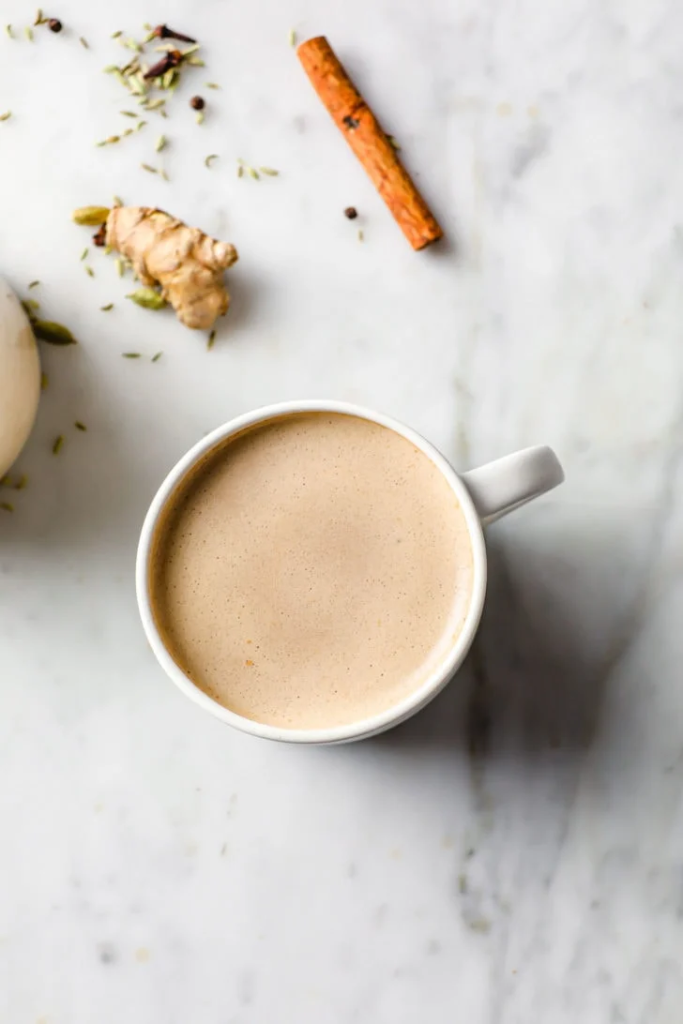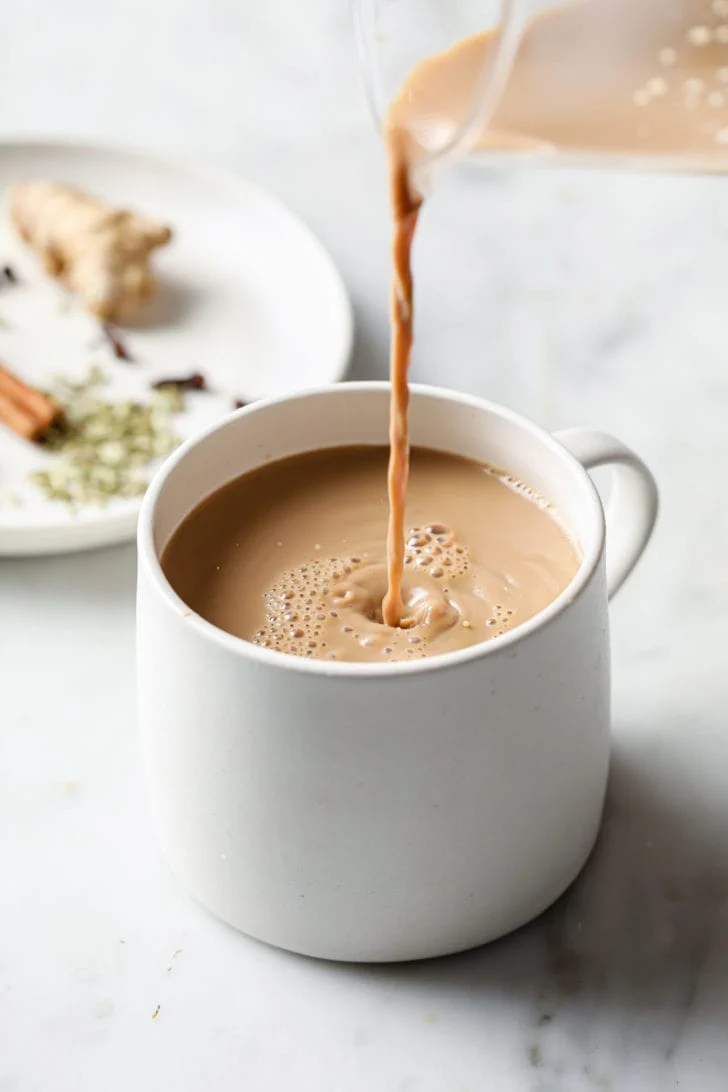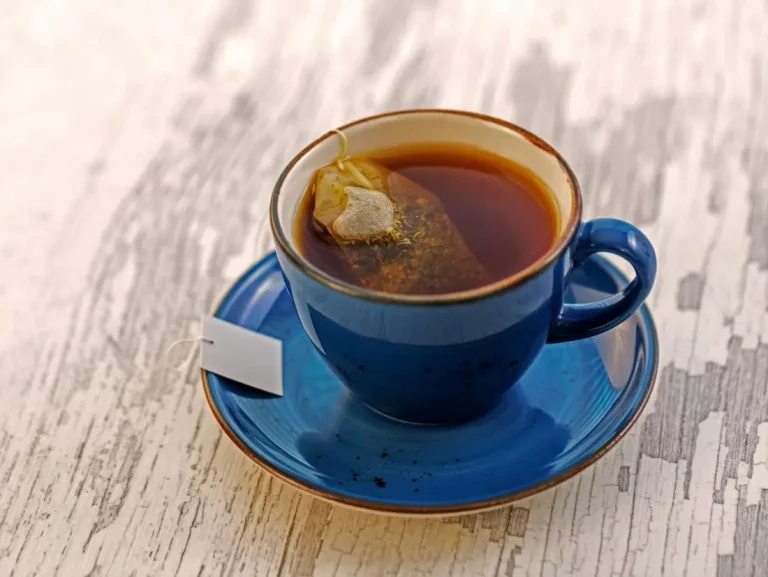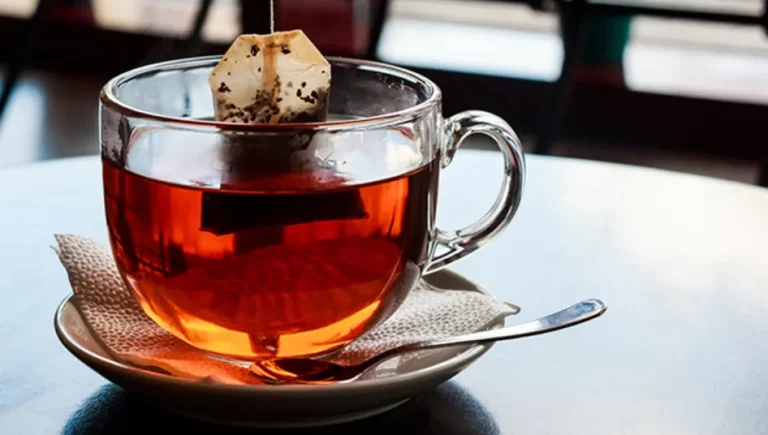You might have encountered the heavily spiced Chai Tea available at your neighborhood coffee shop, typically made from concentrate. However, there’s a more authentic rendition known as Masala Chai, which employs whole spices for its distinct flavor. This simple recipe utilizes whole spices and tea bags to craft a comforting, well-balanced, and exquisitely spiced cup of Chai. Whatever your mood, this recipe is sure to elevate it!
WHY THIS RECIPE?
For many of us, not much thought goes into making Masala Chai. But if you haven’t made it before, there are a few things you want from a recipe. Here’s why you’ll like this one:
- It accounts for evaporation. This means you won’t set out to make 2 cups and end up with half a cup.
- The ginger is not overwhelming. Indian restaurants often add loads of ginger and let their chai sit for hours, which ends up making it a little uncomfortable to drink.
- Adding on to that, the spices in this recipe are balanced and not too pungent. Of course, you can customize each spice to your taste. But the base spice mix serves a neutral starting point so that no spice is overpowering.
- As always, it’s precise, easy-to-follow, and tested to perfection!
WHAT IS MASALA CHAI?
Masala chai (or Spiced Chai) is a traditional Indian tea made with spices, ginger, and milk. Though Masala Chai isn’t as popular in Pakistani culture as it is in Indian culture, growing up as a South Asian in America, I’ve had countless cups. Masala chai elevates a regular cup of chai with spices, making it even more relaxing, calming, and soothing to the senses.

CHAI VS MASALA CHAI
The word chai simply means tea. You have the simple, milky cup of chai, the characteristically pink Kashmiri chai, and many other popular versions of chai. Masala Chai is distinguished by the use of spices, or masala, in chai.
MASALA CHAI VS CHAI TEA
Yes, Chai Tea is a redundant term. (My friend Kathryn’s PSA on phrases like “Chai Tea” and “Chai-Spiced” explains it best.) But I do think that Chai Tea, initially a rendition on masala chai, has evolved into its own drink. When I think of Chai Tea or Chai Tea Lattes, I think of the coffee shop drink made with concentrated Chai flavor. It’s so different from traditional Indian Masala Chai, that it can safely be categorized as a completely different drink.
Masala Chai is made by simmering the tea with spices and cooking down the milk. This lends it a richer, creamier, more complex taste.
On the flip side, there’s Chai Tea, typically crafted with steamed milk, offering a diluted yet potent flavor derived from concentrate or powder. In contrast, Masala Chai, or Spiced Chai, maintains its authenticity, often devoid of manual frothing compared to the distinctly frothy Chai Tea Latte.
To conjure up this soul-soothing brew, you’ll need only a handful of ingredients: tea bags, a selection of spices, milk, and sweetener. If a spice or two is missing from your pantry, fear not—it shouldn’t hinder your Chai-making journey!
When selecting black tea for your Chai, opt for robust Pakistani or Indian black tea bags, typically brewed with Assam or Darjeeling tea leaves using the CTC method. Familiar brands like Tapal, Wagh Bakri, Ahmad Tea, or Tetley are readily available in South Asian grocery stores. Should you opt for weaker tea or whole leaf Darjeeling or Assam, simply adjust the quantity accordingly to maintain the desired strength.
While this recipe is tailored for tea bags, using tea leaves is a viable option, although it may alter the strength and flavor profile. When grinding spices, consider their intensity, as it could influence the overall brew. For a more potent flavor, grinding them into a chai masala powder is an option, though remnants may linger at the bottom of your cup.
Now, onto the brewing process: start by simmering water, whole spices, and ginger in a saucepan, allowing the aromatic concoction to flourish. Introduce tea bags (or leaves) to infuse the water with their rich flavors, then incorporate milk and sugar to enhance the brew’s creaminess and balance the spices. Once boiled to your desired consistency, strain the concoction, discarding the tea bags and spices.
For those craving an extra creamy texture, consider aerating the Chai—a technique employed by chai vendors in Pakistan and India, which involves repeatedly pouring and scooping the Chai to create frothy bubbles. While mastering this artistry may require practice, a milk frother offers a simpler alternative.
To perfect your cup of Masala Chai, consider the type of tea used, adjust quantities to achieve the desired strength, and allow room for experimentation as your preferences evolve. Whether enjoyed hot or cold, paired with baked goods or savored on its own, Masala Chai promises a delightful journey through a symphony of spices and flavors.



